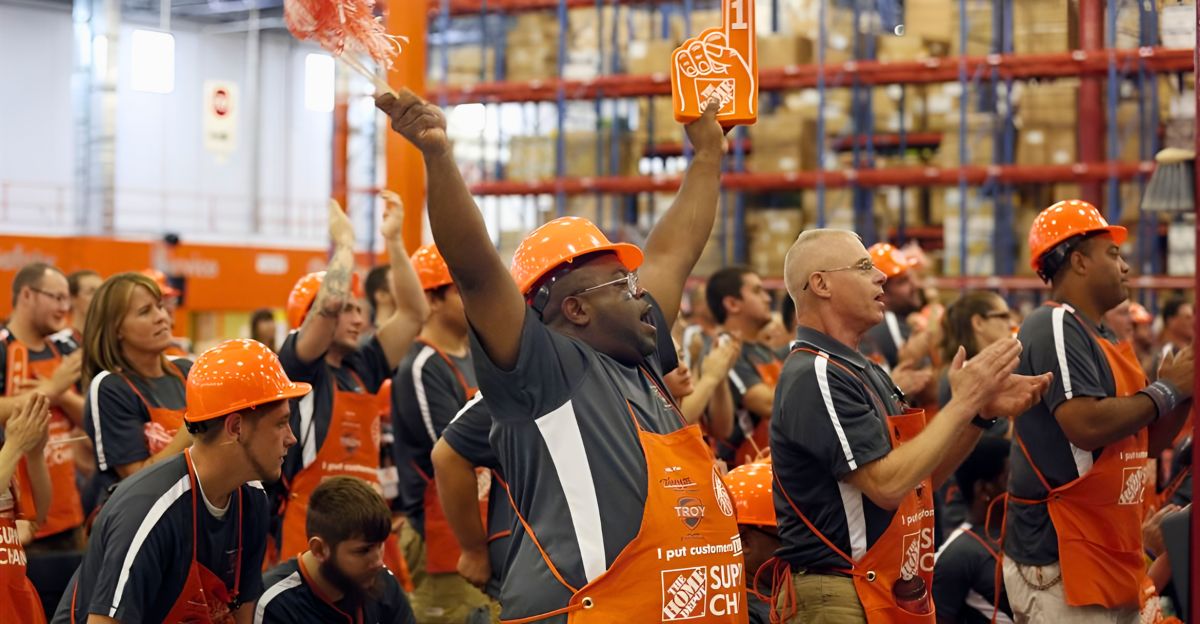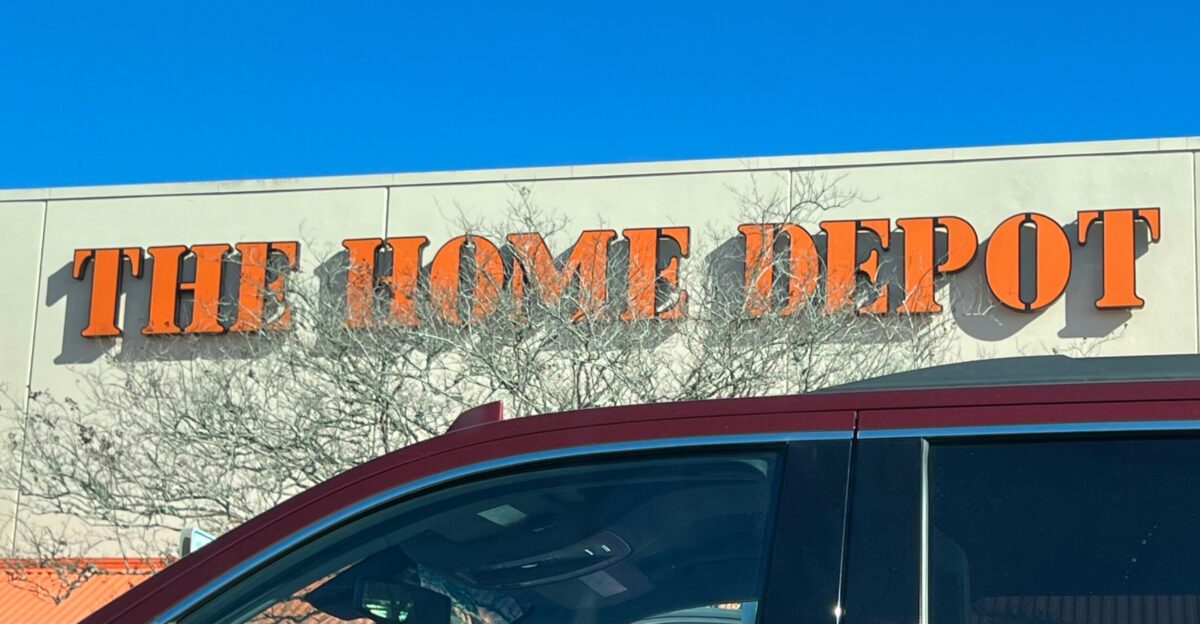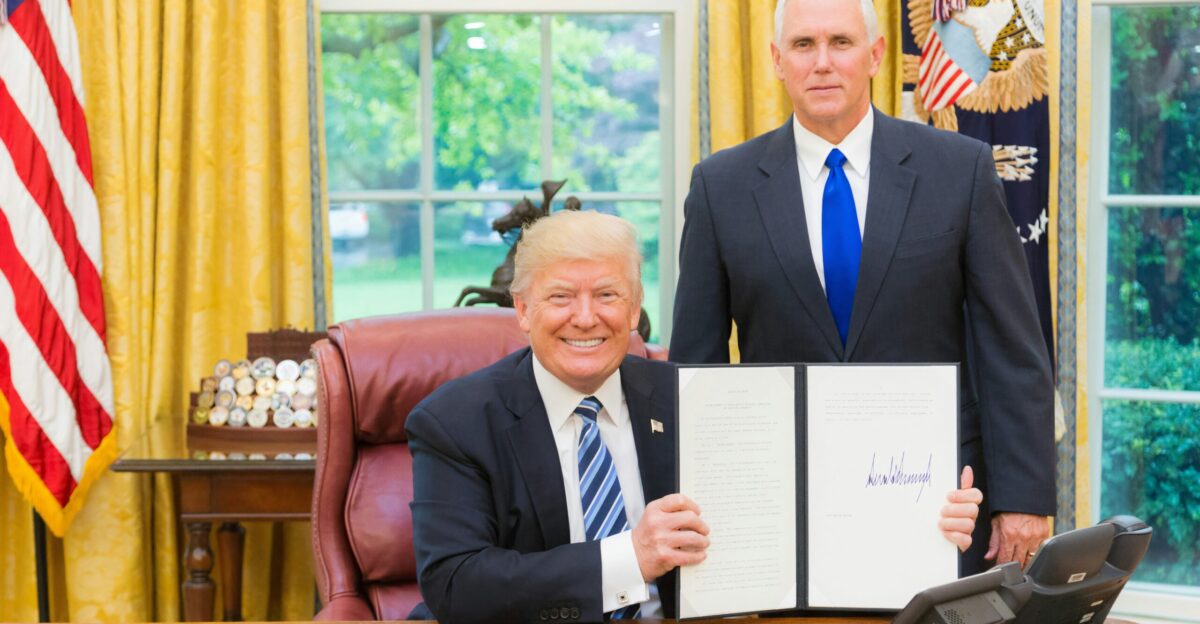
Sometime in late March, Home Depot made a subtle website change, erasing something that used to be front and center on its website. Unless you were looking very closely, you probably didn’t notice it. It didn’t come with a press release or public apology. No CEO statements. No headlines.
But behind the silence, a calculation had been made. A cultural minefield was avoided. At first glance, the change looks like nothing, just a new webpage banner and some softened language.
So, when a multi-billion-dollar company quietly alters public-facing language around inclusion, it raises questions. What’s the message here? Is this a retreat, or something more strategic? As the culture war heats up, this story offers a surprising twist on how innovative businesses survive it.
This Isn’t Just One Store. It’s a National Strategy.

It’s easy to overlook what happens on a single company’s website, but this story stretches far beyond one brand or banner. The quiet change reflects a broader shift happening across boardrooms, HR departments, and legal teams nationwide.
Since early this year, companies have been scrambling to recalibrate their public-facing values, especially those tied to diversity and inclusion. It’s not isolated to big cities or red states. Whether you’re shopping in Portland or Pensacola, corporate culture is quietly shifting around you. And if you’ve sensed that certain buzzwords are disappearing from ads or job listings, you’re not imagining it.
Why the Stakes Are Higher Than Most Realize

Back in January, President Trump signed an executive order directing the DOJ to identify and investigate “egregious” diversity programs in the private sector. That’s no small threat.
Companies suddenly found themselves under scrutiny, not for failing to hire equitably, but for appearing to do so too explicitly. The environment became radioactive. For companies like Home Depot, it was a catch-22: keep the old language and risk an investigation, or pivot fast and quietly. The ones that moved swiftly weren’t retreating from values, they were trying to stay alive.
Now We Know: Home Depot Scrubbed Its DEI Page

And here’s what they changed: in March, Home Depot quietly removed its Diversity, Equity, and Inclusion section from its website. The once-prominent page filled with passionate language and community pledges was replaced with a less specific “WeAreTHD” banner.
Gone are the bold references to DEI. In their place? Vague messaging about respect, collaboration, and opportunity. To most customers, it was a blink-and-you-miss-it change. But to those watching closely, it marked a strategic sidestep. The move was calculated, not careless.
Instead of making a scene, Home Depot chose subtlety. The goal? Preserve the company’s core values without putting a target on its back.
What’s Actually Changing Inside the Company? Not Much.

Despite the digital cleanup, Home Depot hasn’t gutted its internal DEI programs. Employee resource groups? Still running. Diverse hiring initiatives? Still funded. Trainings, mentorships, and inclusive culture building? All there, just not branded as “DEI” anymore. And that’s the key.
Gen Z, set to make up over a quarter of the workforce, demands inclusive workplaces. Companies that drop the ball on that front will struggle to compete for talent. Home Depot isn’t walking away from diversity. It’s walking away from how it talks about it. Behind the new banner, the real work continues, just with less fanfare and fewer political landmines.
How This Plays Out in Your Local Store

Walk into your local Home Depot today, and you won’t see signs announcing DEI initiatives. But you might meet a military veteran managing the tools aisle, or a bilingual cashier helping a Spanish-speaking customer. Diversity is still baked into the workforce, but now, it’s being framed as customer service, not social progress. That’s a deliberate shift.
In regions where political tensions run high, the new messaging reduces the risk of public blowback while preserving the company’s broader mission. So if your local store feels the same, it’s a quiet confirmation that internal culture didn’t vanish. It just went underground.
The People Behind the Pivot

HR teams, communications officers, and store managers all had a hand in shaping how the shift would roll out. These aren’t corporate robots; they’re real people navigating a messy landscape. Many employees deeply support DEI values. Others feel wary after seeing peers at other companies become political scapegoats.
The decision to rebrand wasn’t taken lightly. For many inside the company, it was a painful compromise. But it was also a protective one. By shielding inclusive programs from political fire, the company gave workers space to keep doing the work, even if they can’t say the words out loud anymore.
Competitors Chose a Louder Route. It Didn’t End Well.

Compare Home Depot’s approach to that of Target or Bud Light, and the difference is night and day. Both brands made high-profile DEI statements, and both were met with fierce backlash, from protests to plunging sales. Target alone reported a 3.8% drop in sales tied to political boycotts. In contrast, Home Depot kept its head down, avoided headlines, and came out unscathed. That’s not cowardice, it’s savvy.
By shifting from visible virtue signaling to quiet implementation, Home Depot protected both its brand and its balance sheet. In today’s climate, silence isn’t surrender. It’s often the smartest move in the playbook.
Consumers Are Changing. Companies Are Catching Up.

There’s a growing disconnect between what consumers say they want and how they behave. Surveys show 82% of shoppers prefer brands that reflect their values, but only a fraction are willing to pay more or shop differently because of it. Meanwhile, missteps trigger fast, fierce backlash.
Companies like Home Depot are adapting to that paradox. They’re still building inclusive environments, but doing so behind the scenes, not on splashy web pages or social media. This new era of corporate communication is shaped by a single truth: in a divided culture, even well-meaning messages can become liabilities. Consumers want alignment—but not noise.
Where This All Leads

What does Home Depot’s quiet pivot really tell us? That in today’s climate, innovative companies don’t just shout their values; they live them, strategically and silently. The public stage is loud, crowded, and dangerous. And increasingly, it’s not where real inclusion happens.
The companies that succeed in this new landscape will be those that protect their people, serve their customers, and communicate wisely without waving ideological banners. Home Depot didn’t cave. It adapted. And now, others may follow. The question is: will consumers reward substance over symbolism? Or will we keep forcing companies to play a game where everyone loses?
